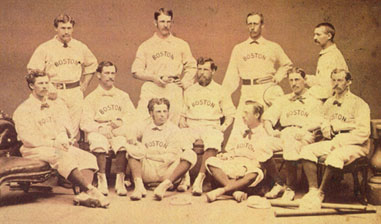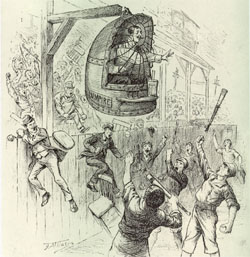 National Association
National Association
 National Association
National Association
 On St. Patrick's Day, 1781, the National Association of Base Ball Players was rended in two -- those committed to baseball's amateurism  in the style of the Knickerbockers, and those sold on Harry Wright's salaried Red Stockings. The new league -- the National Association of Professional Base Ball Players, consisted of Wright's Boston Red Stockings, the Chicago White Stockings, Philadelphia Athletics, New York Mutuals, Washington Olympics, Troy Haymakers, Fort Wayne Kekiongas, Cleveland Forest Citys, and the Rockford Forest Citys. in the style of the Knickerbockers, and those sold on Harry Wright's salaried Red Stockings. The new league -- the National Association of Professional Base Ball Players, consisted of Wright's Boston Red Stockings, the Chicago White Stockings, Philadelphia Athletics, New York Mutuals, Washington Olympics, Troy Haymakers, Fort Wayne Kekiongas, Cleveland Forest Citys, and the Rockford Forest Citys.
The Red Stockings won four of the five Association titles, before the league folded in 1876. The National Association was riddled with problems from the outset. Boston's winning was the result of a successful program of buying the other teams' stars, often causing these smaller franchises to fail. Economic depression hindered attendance. Players jumped from team to team for better pay, as league rules did not prohibit the practice. Drunken "rowdyism" was prevalent at games, and players were bought off by gamblers. The National Association would prove to be a failed experiment. However, by mid-1870s, with a burgeoning population and a railroad network throughout the northeast, a professional league with a fixed schedule was feasible. What professional baseball required, and would soon have, was sufficient financial organization. |
|
Ben Lisle -- American Studies at the University of Virginia -- December 2000 |